Not all the plants growing on Dawlish Warren are rare and coastal. Here are two that are happy growing on waste land everwhere.
phil_pullen@hotmail.com
Not all the plants growing on Dawlish Warren are rare and coastal. Here are two that are happy growing on waste land everwhere.
phil_pullen@hotmail.com
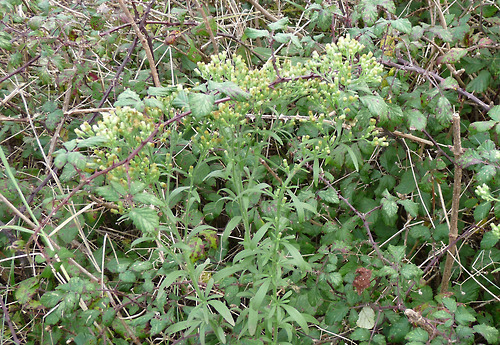
Conyza sumatrensis, Guernsey Fleabane.
Still spreading its range, this naturalised South American plant can be found growing in a semi-natural habitat like Dawlish Warren or in waste ground. For the distribution map click here although the distribution in Devon and Cornwall is greater than the map might suggest. Another picture of Conyza sumatrensis can be found on Eva Ekeblad’s web site which is always worth viewing.

Senecio jacobaea, Ragwort
A plant that grows everywhere and if you don’t believe me have a look at the distribution map. You can see Ragwort in the waste ground of a city like Plymouth or as a weed of arable fields. Dwarf coastal plants with dense web-like hairs and without ligules (ray petals) have been called Senecio jacobaea ssp. dunensis.
…..and here is a photo of Ragwort in flower growing with Centaurea nigra, Common Knapweed, and Daucus carota, Wild Carrot.
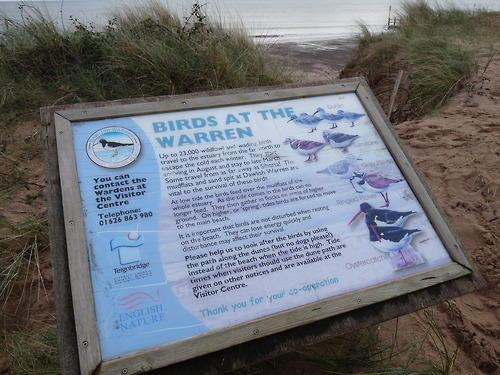
Dawlish Warren is a National Nature Reserve and is well known locally for its bird life. When I was there last week there were two rare visitors; a Black-necked Grebe and a Bearded Tit. You can see the latest sightings at Dawlish Warren by clicking here.

Euphorbia paralias, Sea Spurge.
Sea Spurge grows on sand-dunes and is rather uncommon in South Devon, probably because of a lack of suitable habitat. But even at Dawlish Warren there were only a few plants to be seen, unlike the Portland Spurge shown below which is common on the Warren.

Euphorbia portlandica, Portland Spurge.
This native plant is very much a coastal plant, as the distribution map shows. It is not uncommon in the south-west of England where it grows on sand-dunes as at Dawlish Warren but it is also found sometimes on cliffs.
Staying at Dawlish Warren, an Evening-primrose was still flowering in December. Also a look at the Common mussel.
phil_pullen@hotmail.com
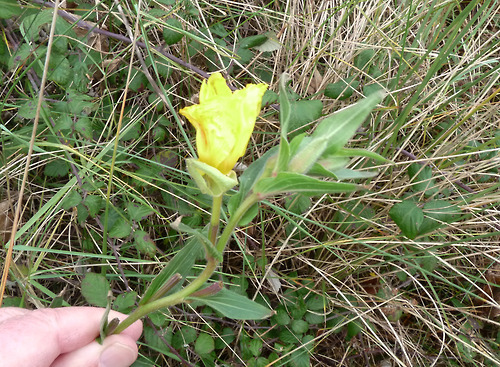
Oenothera stricta, Fragrant Evening-primrose.
Three species of Oenothera are known from Dawlish Warren: Oenothera glazioviana, Large-flowered Evening-primrose; Oenothera cambrica, Small-flowered Evening-primrose and Oenothera stricta. Clive Stace in the latest edition of “New Flora of the British Isles” includes O. cambrica in Oenothera biennis, Common Evening-primrose.
Oenothera stricta is relatively easy to identify and is mostly coastal in the British Isles as this distribution map shows. It is characterised by having linear-lanceolate leaves, often with wavy margins; petals (15)25-40 mm, yellow with a red spot at base at first, then turning reddish; capsules 2-4 mm wide at base, conspicuously enlarged in upper half; seeds smooth. No hybrids are known in Britain.
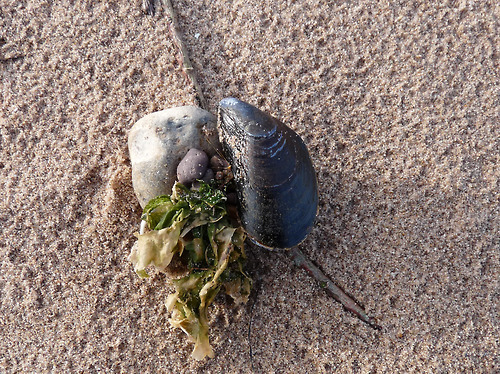
Mytilus edulis, Common mussel.
A bivalve which is very common all around the coast of the British Isles, with large commercial beds in the Wash, Morecambe Bay, Conway Bay and the estuaries of south-west England, north Wales, and west Scotland.
There are two small-leaved Sedums that are sometimes difficult to identify when not in flower. Sedum acre, Biting Stonecrop, shown below growing at Dawlish Warren, and Sedum anglicum, English Stonecrop.
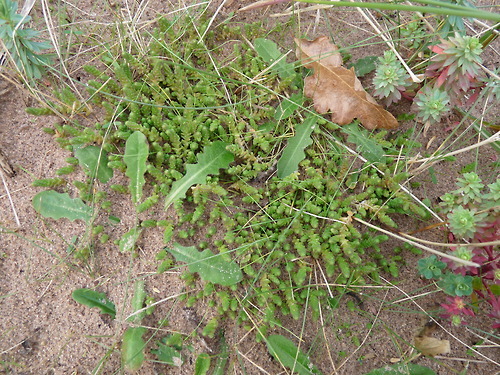
Sedum acre, Biting Stonecrop.
When in flower it is easy to tell the difference between the yellow flowered Sedum acre, Biting Stonecrop, and the white flowered Sedum anglicum, English Stonecrop, shown below.
When the plants are not in flower things are a little more difficult. But it helps if you remember that Sedum acre prefers basic habitats while Sedum anglicum prefers more acidic conditions; that Sedum acre has light green leaves while those of Sedum anglicum are more glaucous and that Sedum acre has imbricate (overlapping) leaves while the leaves of Sedum anglicum do not overlap so that the little spur on the underside of its leaves is easily visible.
Two more plants today from the National Nature Reserve at Dawlish Warren in South Devon.
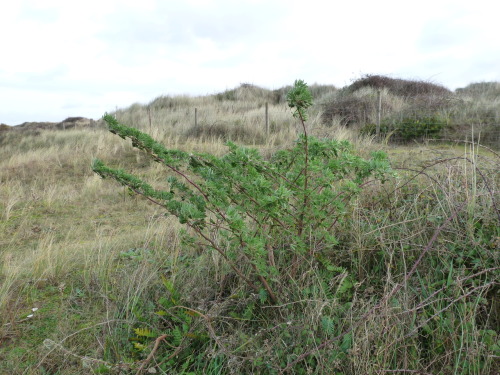
Lupinus arboreus, Tree Lupin.
Tree Lupin is native to California but is well naturalised at Dawlish Warren although the distribution map shows that it is not to be found everywhere in the British Isles.